Idea by
sari elfetori
Call for ideas 2019
Infra-catharsis
Infra-catharsis
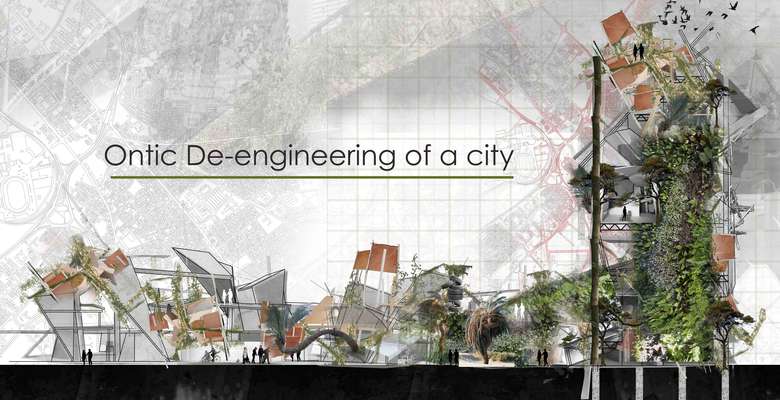
- Systemic changes
This project is inspiring the next generations to break away from the idea of permanent solid buildings and permanent footprints, and give architecture a sense of ephemerality and the impermanence of structure, to be dismantled and taken somewhere else and leave nothing but a green and natural footprint. It will also remind the future that nature and humans are not separate, social engineering should be integrated with the natural green part of the project as well, people will participate in the process of construction + greening the project, and open chance for imperfection and randomness, just like learning from nature and the jungle. When these projects influence the future architects they will also use the advances of technology in the favor of nature, they will hopefully ask one vital question: How could Nature, Technology and Architecture be one?

summary poster
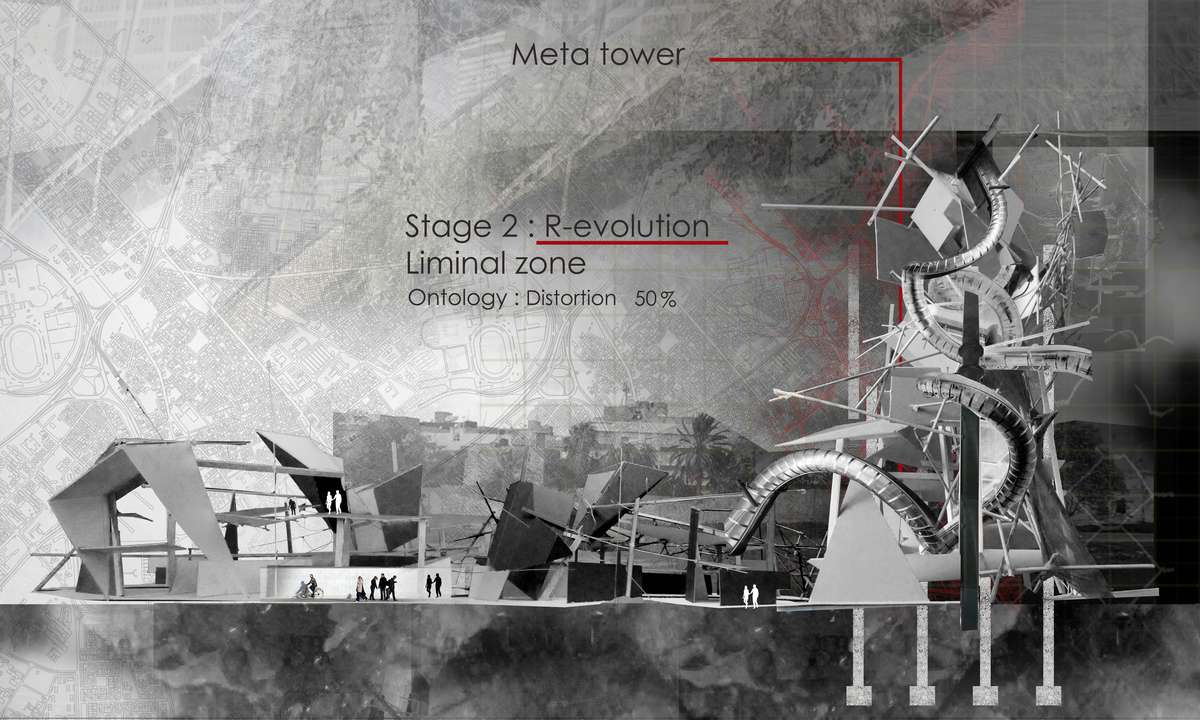
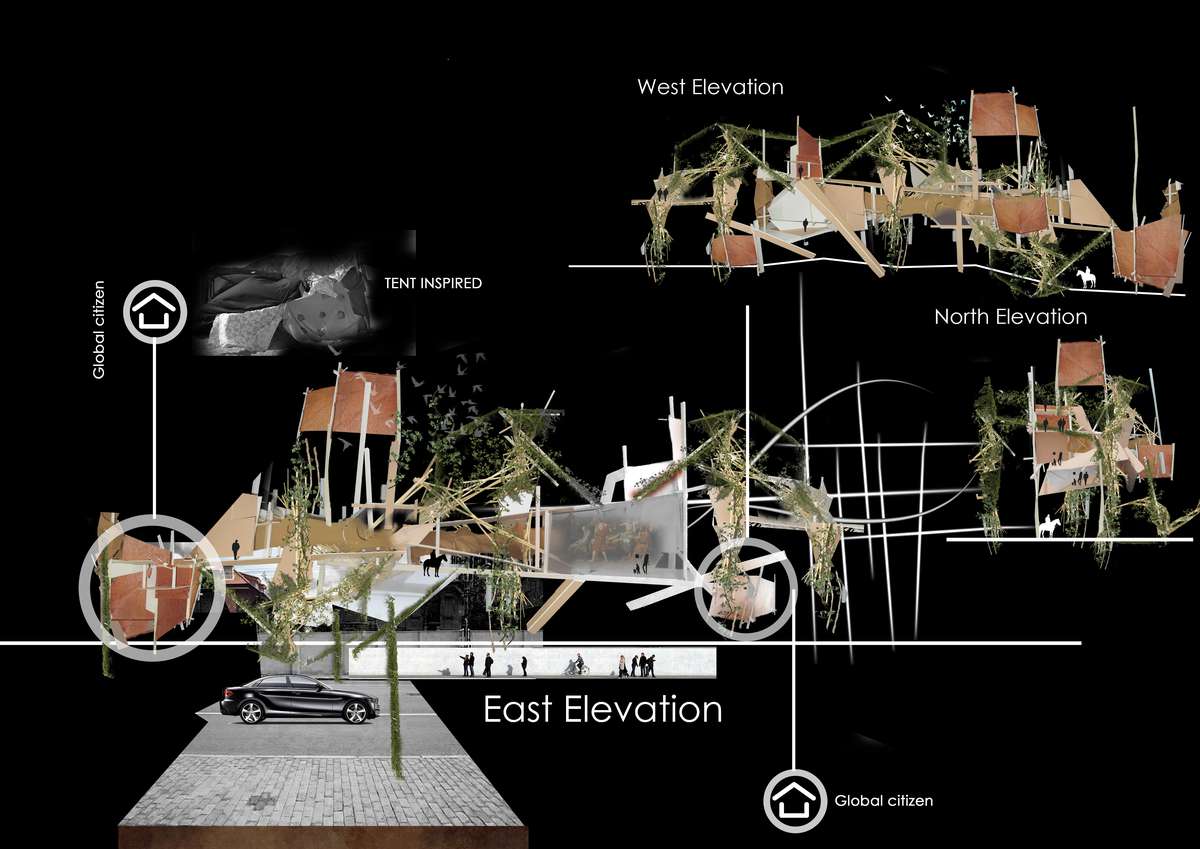
Showing part of the project as it integrates with the city evoking a radical change in the built system of the city , providing a second or more layers above the capitalist street
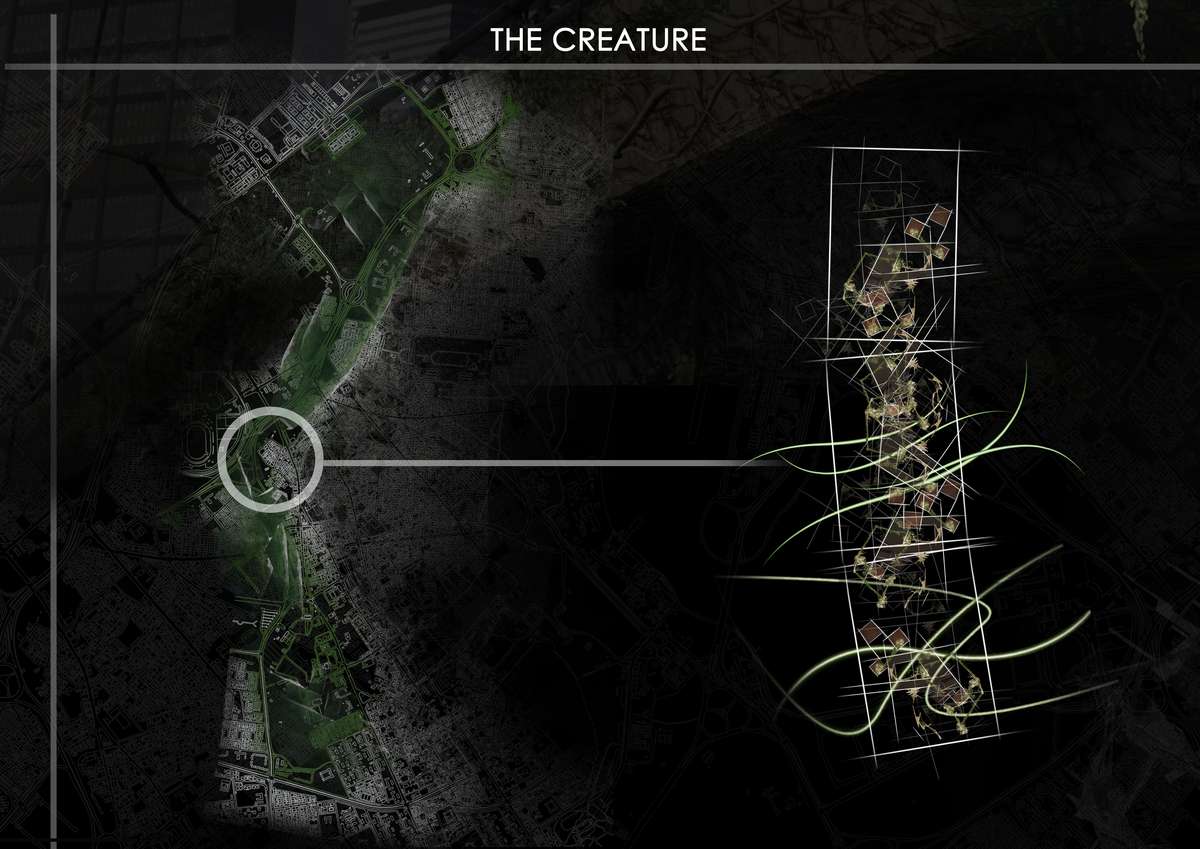
The green creature or organism which is when the greens that people planted grow and invade the architecture they built , the green color in the city plan represents the green covering an area of 2 km long
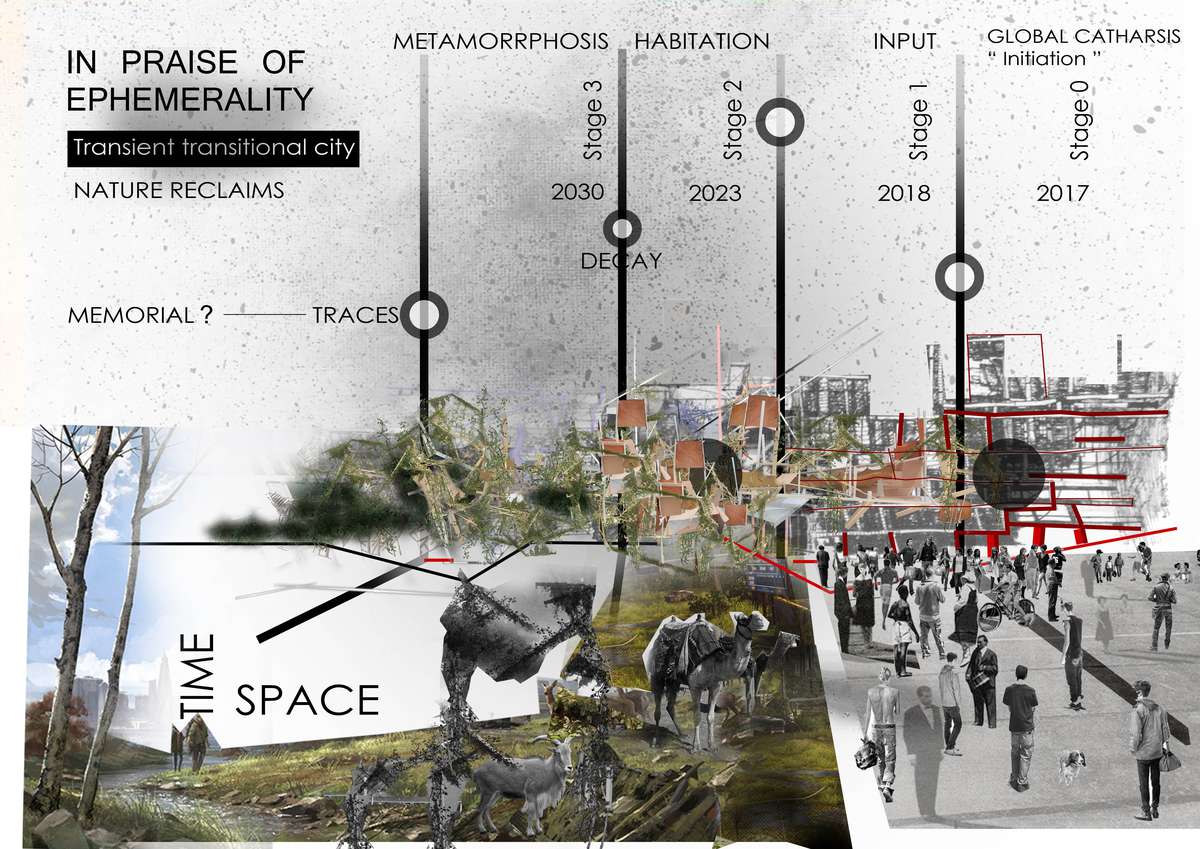
A summary of the built process
Infra-catharsis
Infra-catharsis

- Systemic changes
This project is inspiring the next generations to break away from the idea of permanent solid buildings and permanent footprints, and give architecture a sense of ephemerality and the impermanence of structure, to be dismantled and taken somewhere else and leave nothing but a green and natural footprint. It will also remind the future that nature and humans are not separate, social engineering should be integrated with the natural green part of the project as well, people will participate in the process of construction + greening the project, and open chance for imperfection and randomness, just like learning from nature and the jungle. When these projects influence the future architects they will also use the advances of technology in the favor of nature, they will hopefully ask one vital question: How could Nature, Technology and Architecture be one?
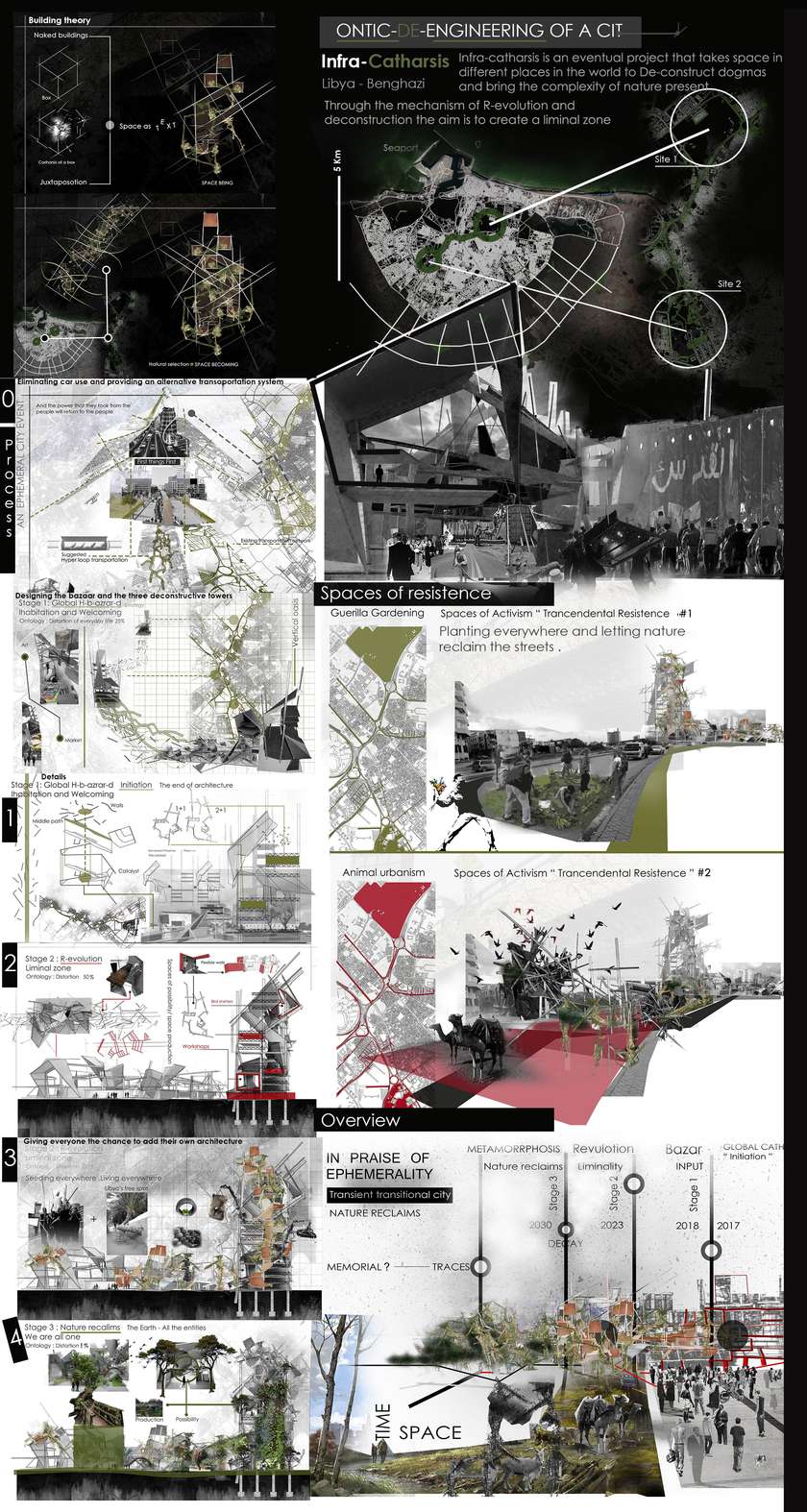
summary poster
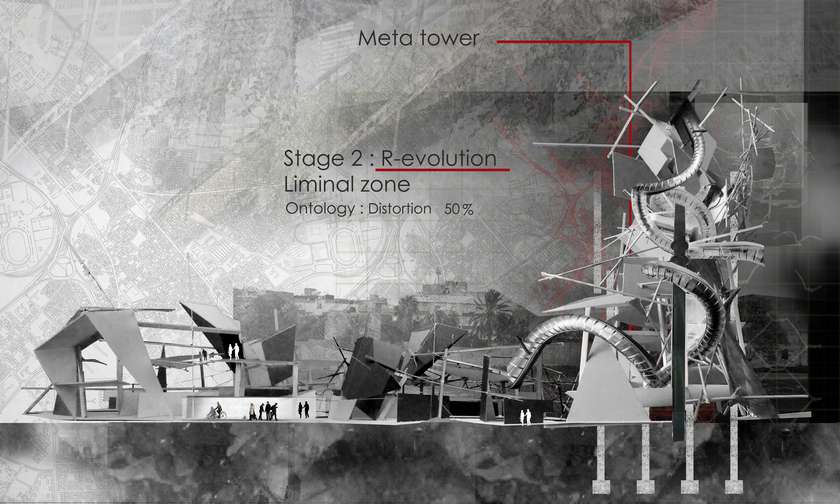
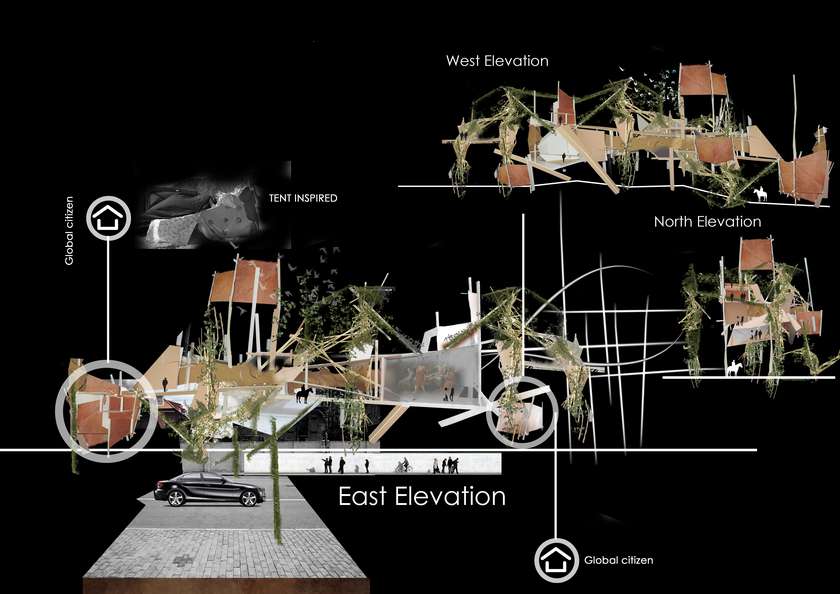
Showing part of the project as it integrates with the city evoking a radical change in the built system of the city , providing a second or more layers above the capitalist street
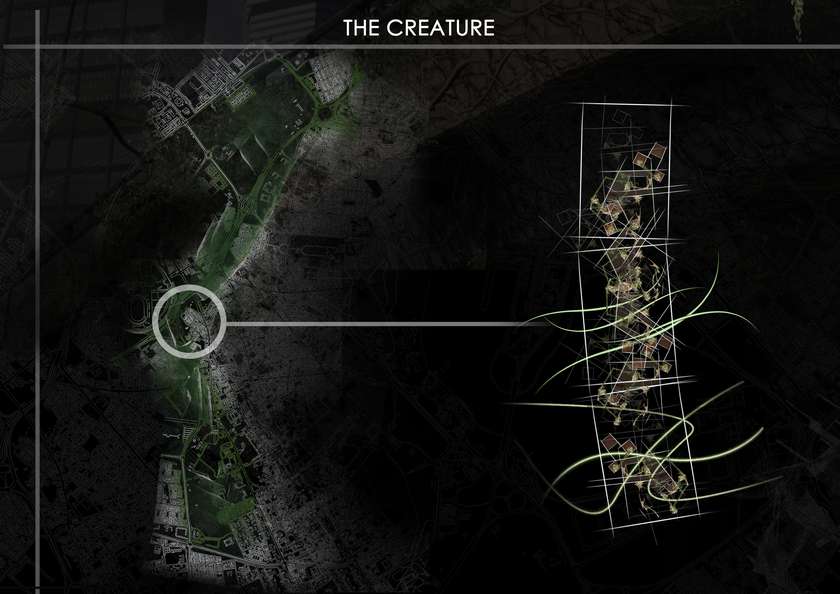
The green creature or organism which is when the greens that people planted grow and invade the architecture they built , the green color in the city plan represents the green covering an area of 2 km long
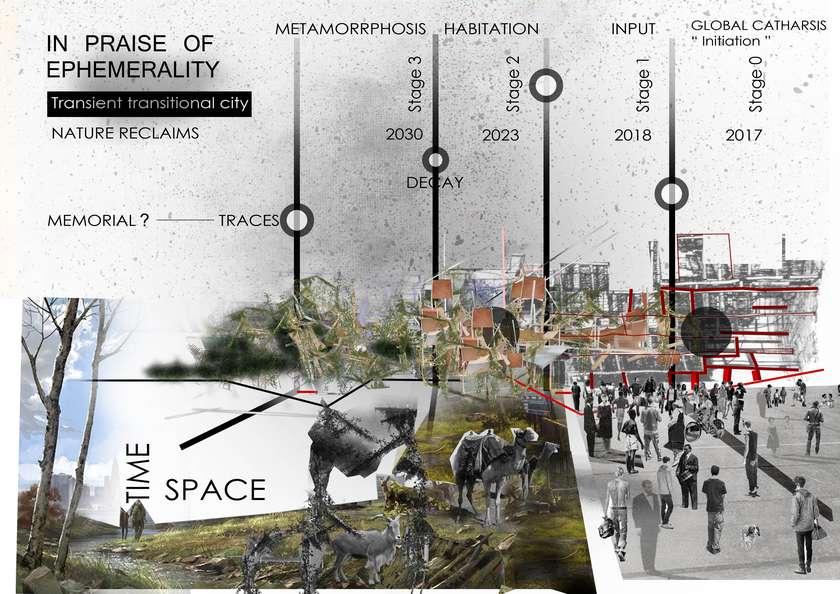
A summary of the built process